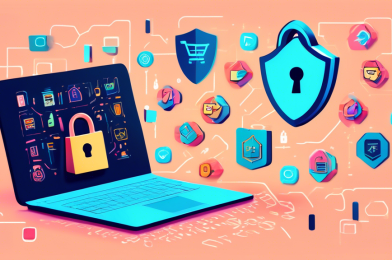Introduction
In today’s digital age, video-sharing platforms like Vimeo have become indispensable tools for creators, businesses, and professionals. Unfortunately, with increased dependence on these platforms comes a heightened risk of unauthorized access. Understanding Vimeo unauthorized access—its causes and solutions—is crucial for safeguarding your content and personal information.
Unauthorized access can manifest through various methods, ranging from spear phishing schemes to system vulnerabilities and human error. The repercussions of such intrusions can be severe, including compromised content, privacy breaches, and adverse business impacts. By identifying the common causes and implementing effective security measures, users can better protect their Vimeo accounts from unauthorized access.
In this article, we will delve deep into the common causes of unauthorized access to Vimeo accounts, its potential impacts, and provide actionable solutions to fortify your account security. Equip yourself with the knowledge to keep your Vimeo experiences secure and uninterrupted.
Common Causes of Vimeo Unauthorized Access: Identifying the Threats
Unauthorized Access Methods: Spear Phishing, Weak Passwords, and Shared Accounts
Vimeo unauthorized access often arises from various malicious activities, with spear phishing, weak passwords, and shared accounts being the primary culprits. Spear phishing is a targeted attack where cybercriminals deceive users into divulging their login credentials through sophisticated email scams that appear legitimate. Once these attackers gain access, they can manipulate or steal content without detection.
Weak passwords present another significant vulnerability. Despite repeated warnings, many users continue to employ easy-to-guess passwords, such as ‘password123,’ making their accounts susceptible to brute-force attacks. Cybercriminals use automated tools to try thousands of password combinations rapidly, gaining entry within minutes if the passwords lack complexity.
Shared accounts are equally dangerous. When multiple users access the same Vimeo account, it increases the risk of unauthorized access. Sharing login credentials can lead to accidental disclosures, and if one user’s security practices are lax, it compromises the entire account. It is crucial to maintain strict control over who has access to your account to mitigate these risks.
System Vulnerabilities: Outdated Software and Security Flaws
The integrity of Vimeo accounts is also threatened by system vulnerabilities, particularly outdated software and security flaws. Outdated software lacks the latest security patches, leaving it exposed to known exploits that cybercriminals can easily harness. Regular software updates are imperative to shield accounts from these threats.
Security flaws within Vimeo’s platform or associated applications can be equally problematic. These vulnerabilities might be inherent in the software’s architecture or might arise from poor coding practices. Without prompt identification and remediation, these flaws can be exploited, allowing unauthorized individuals to sidestep usual security measures.
Moreover, third-party applications linked to Vimeo accounts can introduce additional vulnerabilities. If these apps are not routinely checked for security compliance, they become an entry point for hackers. Ensuring compatibility and security standards of all connected apps is essential for a fortified defense against unauthorized access.
Negligence and Human Error: Inadequate Account Management and Security Protocols
Human error remains one of the leading causes of Vimeo unauthorized access. Many breaches occur due to negligence or the absence of robust security protocols. Inadequate account management, such as failing to regularly update passwords or overlooking suspicious login activities, significantly heightens the risk of unauthorized access.
Security protocols, if not correctly implemented and followed, can leave accounts unprotected. For instance, neglecting to activate two-factor authentication (2FA) provides attackers an easier route into the account. Furthermore, inadequate training on cybersecurity best practices means users are often ill-equipped to recognize phishing attempts or differentiate between secure and compromised login pages.
Awareness and adherence to security protocols must be a continuous effort. Organizations need to invest in regular training and updates on the latest security threats and corresponding preventive measures. This proactive approach not only mitigates the risk of human error but also fortifies the overall security stance of Vimeo accounts.
The Impact of Unauthorized Access on Vimeo Accounts
Compromised Content: Deleted, Altered, or Stolen Videos
Unauthorized access to Vimeo accounts can lead to significant damage to the content stored on the platform. Once intruders gain access, they can delete, alter, or steal videos, disrupting the creator’s workflow and potentially causing irreparable harm to their portfolio. For businesses and individuals who rely on Vimeo for storing and showcasing their video content, such breaches can represent a critical loss. Deleting videos not only results in the loss of valuable content but also erases the hard work and effort invested in creating those videos. Altering videos can compromise the original message and brand integrity, while stolen content can be misused or disseminated without the owner’s consent, leading to potential intellectual property violations.
Privacy Breaches: Exposure of Sensitive Account Information
Another severe consequence of unauthorized access to Vimeo accounts is the risk of privacy breaches. When unauthorized users infiltrate an account, they can access sensitive information such as email addresses, payment details, and other personal data linked to the account. This information can be exploited for fraudulent activities, putting the account holder at risk of identity theft and financial loss. Additionally, exposed account information can lead to further security vulnerabilities if the same credentials are used across multiple platforms. Privacy breaches undermine the trust between creators and their audience, as viewers may become wary of supporting content creators who cannot ensure the security of their private information.
Business Consequences: Trust Erosion with Viewers and Potential Revenue Loss
For content creators who use Vimeo as part of their business model, unauthorized access can have far-reaching implications. Trust is a cornerstone of any business relationship, and once it is compromised, it can be incredibly challenging to rebuild. When viewers learn about security breaches, they may question the credibility and reliability of the affected content creators or businesses. This erosion of trust can lead to a loss of viewership, impacting the creator’s reach and influence. In the worst-case scenario, affected users may decide to switch to competing platforms, resulting in a significant drop in audience engagement. Moreover, unauthorized access can disrupt monetization efforts, as altered or stolen videos can no longer generate ad revenue or attract sponsorships. This ultimately affects the creator’s bottom line, as consistent income from their Vimeo content becomes jeopardized.
Therefore, understanding the impact of unauthorized access on Vimeo accounts is crucial for content creators, businesses, and viewers alike. Not only do compromised accounts pose significant risks to the security and privacy of users, but they also carry potential financial repercussions and damage to professional reputations. Addressing these issues proactively by employing robust security measures and educating users about potential threats is essential for safeguarding Vimeo accounts and maintaining a secure content-sharing environment.
Effective Solutions to Prevent Vimeo Unauthorized Access
Unauthorized access to Vimeo accounts can have devastating effects, from content theft to privacy breaches. Thankfully, there are several effective strategies to mitigate these risks. By adopting a multi-faceted approach, users can protect their Vimeo accounts more effectively. This section will discuss important measures to prevent Vimeo unauthorized access, including strengthening account security, regular system updates, and user education.
Strengthening Account Security
One of the most crucial steps to prevent Vimeo unauthorized access is to bolster account security. This involves implementing robust security measures that make it significantly more difficult for unauthorized individuals to gain access. Here are some techniques to achieve this:
Implementing Two-Factor Authentication (2FA)
Two-factor authentication (2FA) adds an extra layer of security by requiring users to provide two forms of identification before accessing their accounts. On Vimeo, this typically involves entering a password and a code sent to their mobile device. By requiring this second form of verification, even if an attacker manages to steal a password, they would still be unable to access the account without the additional authentication factor.
Creating Strong Passwords
Weak passwords are a common vulnerability which can be easily exploited through techniques such as brute force attacks. To prevent Vimeo unauthorized access, it’s essential to create strong, complex passwords. Here are some tips for creating a robust password:
- Use a combination of upper and lower-case letters, numbers, and special characters.
- Avoid using easily guessable information, such as names, birthdays, or simple sequences.
- Create a password that is at least 12 characters long.
Consider using a reputable password manager to generate and store strong passwords, thereby reducing the risk of password compromise.
Regular System Updates
Ensuring that all systems and software are up to date is another essential step in preventing Vimeo unauthorized access. Outdated systems may contain vulnerabilities that can be exploited by attackers. Here are some best practices for keeping your systems secure:
Security Patches
Regularly apply security patches as soon as they become available. These patches often address known vulnerabilities and protect against potential exploits. Enable automatic updates whenever possible to ensure that critical patches are not missed.
Software Updates
Keep all software, including operating systems, browsers, and applications, up to date. Software developers frequently release updates that enhance security and remove vulnerabilities. Regularly checking for and installing these updates can help mitigate security risks.
Educating Users
Human error and negligence can often contribute to security breaches. Therefore, educating users on security best practices is an essential component of preventing Vimeo unauthorized access. Here’s how to promote awareness and enhance security:
Security Awareness Training
Conduct regular security awareness training sessions for users to educate them about the latest security threats, phishing techniques, and safe browsing habits. This training should include guidance on recognizing suspicious emails, avoiding malicious links, and protecting personal information.
Account Management Policies
Implement and enforce strict account management policies. Ensure that users understand the importance of logging out of accounts when not in use, avoiding the use of shared accounts, and reporting any suspicious account activity immediately.
Additionally, consider adopting the following best practices:
- Use unique passwords for different online services to prevent a single breach from compromising multiple accounts.
- Encourage regular password changes and avoid reusing old passwords.
- Regularly review account permissions and remove access for users who no longer need it.
Conclusion
Preventing Vimeo unauthorized access requires a holistic approach that involves strengthening account security, ensuring regular system updates, and educating users about security best practices. By implementing these strategies, users can significantly reduce the risk of unauthorized access and protect their valuable content and personal information on Vimeo.
Conclusion
Addressing Vimeo unauthorized access is paramount for maintaining the integrity and security of your videos and personal information. By understanding the common causes such as spear phishing, weak passwords, shared accounts, and system vulnerabilities, users can take proactive steps to mitigate these risks. The impacts of unauthorized access, including compromised content, privacy breaches, and significant business consequences, underscore the need for robust security measures.
Implementing effective solutions, such as strengthening account security with two-factor authentication, maintaining regular system updates, and educating users about best security practices, is essential. By adopting these strategies, users can better protect their Vimeo accounts, ensuring their content remains secure and their viewer trust intact.
In conclusion, while the threats to Vimeo accounts are real and evolving, staying informed and vigilant can make all the difference. Prioritizing cybersecurity measures not only safeguards your digital assets but also fosters a safer and more trustworthy online environment for all users.









